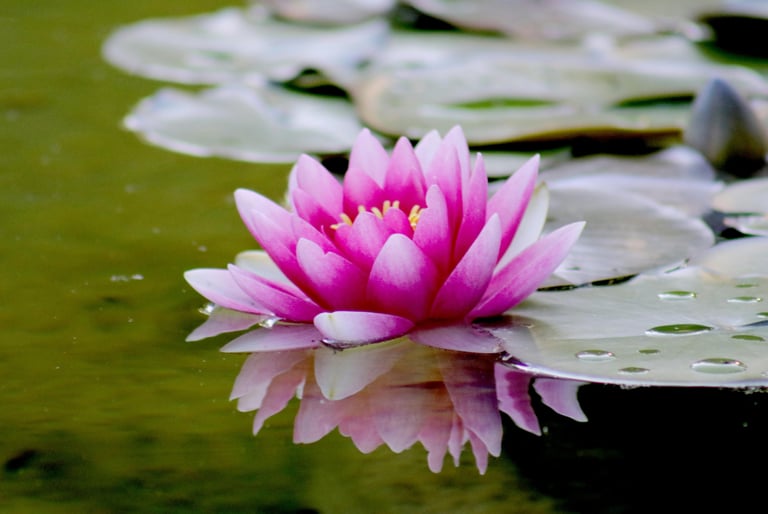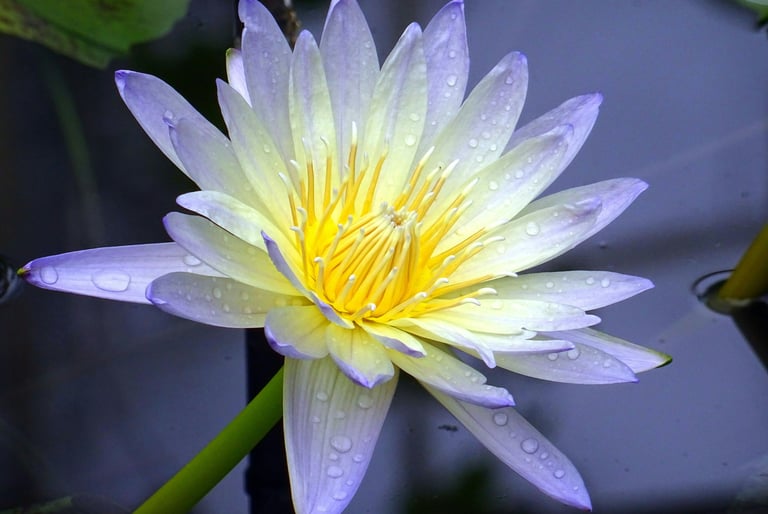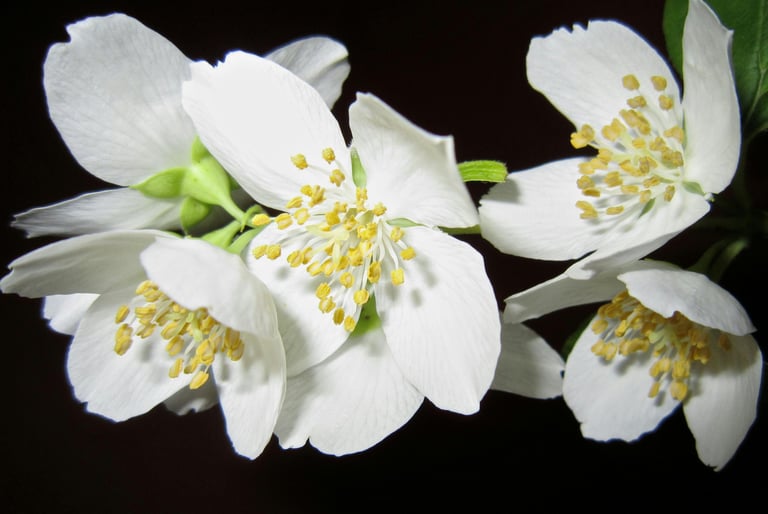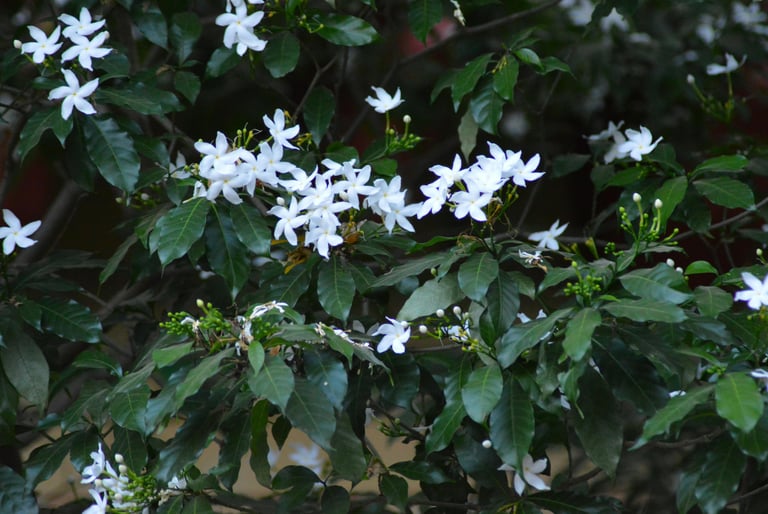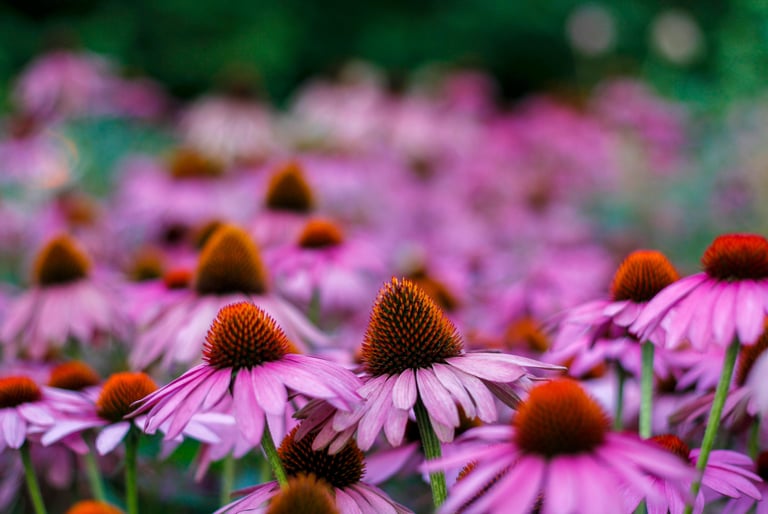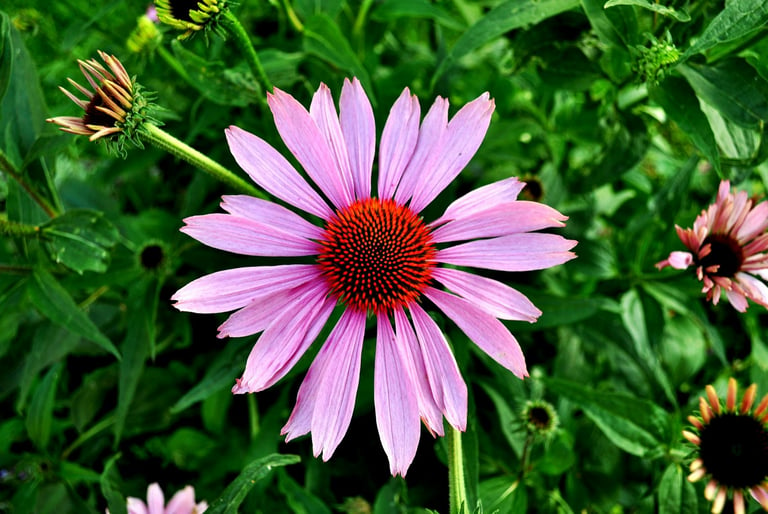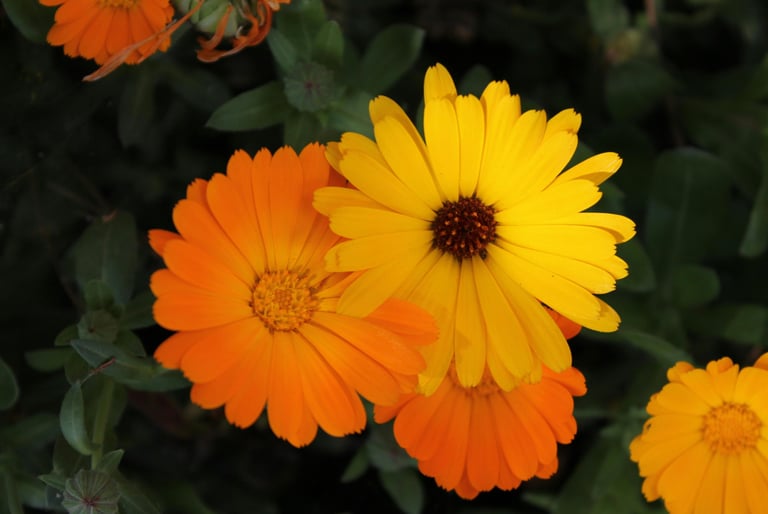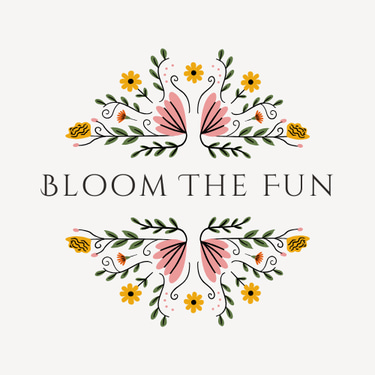Flower Meanings
Explore the symbolism and beauty of flowers from around the world.
The Rose
Roses have long stood as one of the most powerful and recognizable symbols in the natural world. Revered across civilizations, this iconic bloom carries a weight of meaning that transcends borders, languages, and time. From expressions of love to symbols of spiritual devotion, the rose has been deeply embedded in human culture, mythology, and emotional expression for centuries.
At its core, the rose symbolizes love—but that love is not limited to romance. Depending on the number of roses given or the context in which they are offered, roses may also express appreciation, honor, gratitude, admiration, and devotion. Their beauty and layered structure make them ideal symbols of complex human emotions and meaningful life moments.
Roses in Historical and Cultural Context
Throughout history, roses have played a significant role in religious, political, and literary traditions. In ancient Greece and Rome, roses were sacred to deities associated with beauty, passion, and fertility. Wreaths and petals often accompanied important ceremonies, symbolizing honor and reverence.
In Christianity, roses came to represent spiritual purity and devotion. Over time, they were incorporated into religious iconography, especially in association with figures such as the Virgin Mary and saints. The rose also became a symbol of sacrifice and divine love, appearing frequently in religious literature and sacred art.
In Eastern philosophies and traditions, roses have been used to convey unspoken messages, often tied to principles of harmony, mindfulness, and personal intention. The arrangement and number of roses carry layered meanings and are sometimes believed to influence energy or emotional clarity.
Roses in Literature and Symbolic Expression
Roses have long served as powerful metaphors in poetry and storytelling. Writers across eras—from classical literature to modern works—have used roses to explore themes such as the passage of time, the complexity of the human heart, and the tension between beauty and impermanence. The structure of the rose itself—with its unfolding petals and hidden center—has been seen as a reflection of inner truth, emotional vulnerability, and personal growth.
The number of roses presented in a gift can also convey specific meanings. A single rose may signify devotion, while a larger number can suggest completeness, celebration, or deep emotional connection. In this way, roses allow people to communicate nuanced feelings through a simple, elegant gesture.
Why Roses Remain a Timeless Symbol
What makes roses so enduring is their ability to speak to both the heart and the intellect. They are used to mark beginnings and endings, joy and sorrow, admiration and grief. The rose remains a universal flower for life’s most meaningful moments—not only for its physical beauty, but for the depth of meaning it carries across cultures and time.
To learn about the different kinds of roses, click here:
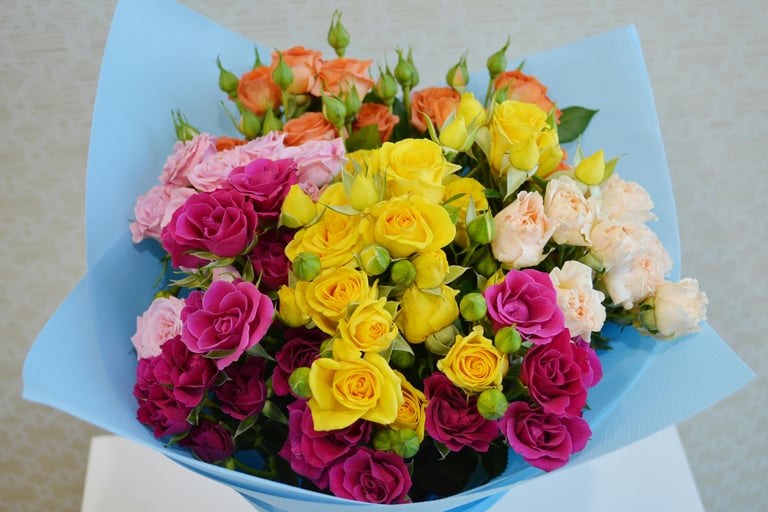

The Tulip
Tulips are elegant and timeless flowers that have captivated hearts and imaginations across centuries. Known for their simple yet graceful shape and deep symbolic significance, tulips convey a range of meanings influenced by cultural history and context. At their essence, tulips represent perfect love and deep emotion, often symbolizing enduring affection and the rebirth of hope. As one of the first flowers to bloom in spring, tulips have long been associated with renewal and new beginnings.
Historical and Cultural Significance
Originating in Central Asia and introduced to Europe in the 16th century, tulips quickly became highly prized, particularly in the Netherlands. This admiration led to “Tulip Mania,” one of the earliest recorded economic bubbles, highlighting their importance as symbols of luxury, beauty, and abundance. Over time, tulips evolved beyond status symbols to embody fresh starts, joyous occasions, and the promise of brighter days ahead.
The tulip’s annual emergence after long winters makes it a powerful emblem of hope, resilience, and the natural cycles of life. Its graceful form reminds us that even after the coldest, darkest periods, growth and renewal are inevitable.
Symbolism of Renewal and Emotional Strength
Because tulips bloom early in the year, they have come to represent the qualities of renewal, emotional resilience, and personal growth. These flowers serve as gentle reminders that life’s challenges are often followed by periods of beauty and transformation. As living symbols of new beginnings, tulips encourage us to embrace change with optimism and confidence.
Tulips in Expression and Celebration
Tulips are versatile flowers that convey messages of love, positivity, and heartfelt connection. Whether presented as a single elegant bloom or arranged in vibrant bouquets, tulips remain a popular choice for gardens, celebrations, and meaningful gifts. Their clean lines and timeless beauty make them suitable for a variety of occasions, from marking milestones to offering comfort and care.
Throughout history, tulips have also been associated with charity and generosity, making them ideal flowers to express appreciation and goodwill. Their enduring appeal lies in their ability to communicate profound emotions simply and gracefully.
To learn more about each kind of tulip, click below:
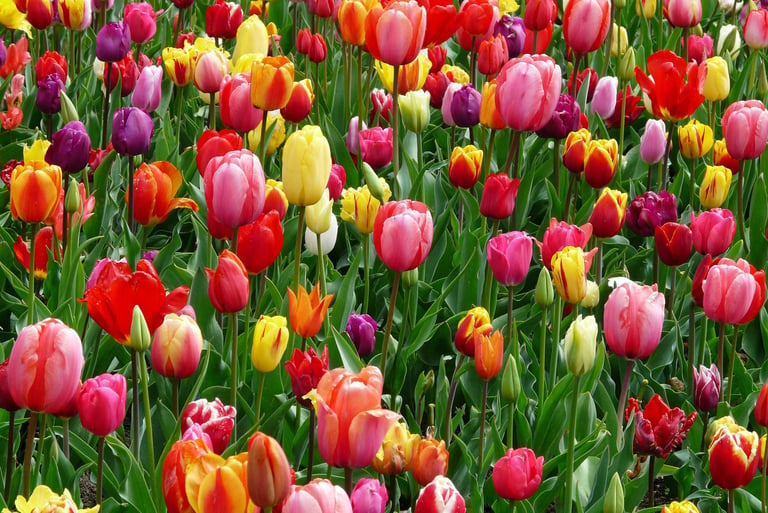

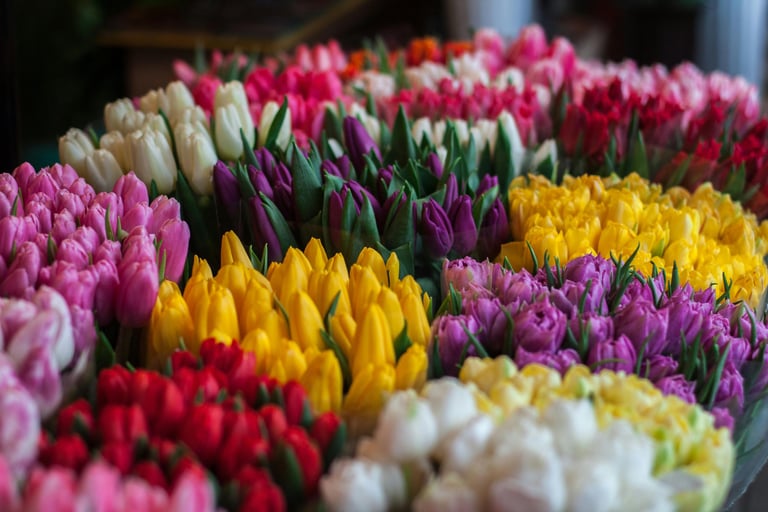

The Iris
The iris is a striking and regal flower that has captured human admiration for centuries, carrying rich symbolism that spans cultures and traditions. Named after Iris, the Greek goddess who served as a divine messenger between heaven and earth, the flower itself embodies themes of communication, wisdom, faith, and hope. Its unique shape—characterized by elegant, sword-like leaves and intricately ruffled petals—reflects a blend of grace and strength, making the iris a symbol of both emotional depth and spiritual significance.
Historical and Mythological Roots
In ancient Greek mythology, Iris was known to travel on rainbows, delivering messages between gods and mortals. This connection made the iris flower a natural symbol for bridging realms, whether between life and death, heaven and earth, or the emotional and intellectual sides of the human experience. Across many cultures, especially in Europe and Asia, the iris has been regarded as a flower linked to the divine and the eternal. Its presence in religious art and royal iconography—most notably as the inspiration for the fleur-de-lis—has reinforced its reputation as a symbol of purity, majesty, and light.
Symbolism Beyond Beauty
The iris is not only admired for its beauty but also for its strong symbolism related to courage and valor. It often appears in military and memorial contexts, where it represents bravery and remembrance. In some traditions, irises are planted on graves or used in ceremonial settings to honor those who have passed, emphasizing the flower’s role as a symbolic link between this world and the next.
Moreover, the iris carries meanings of rebirth and renewal, as it typically blooms in late spring, marking the transition from colder months into a season of growth and vitality. This makes the iris a living reminder that strength and beauty often emerge through perseverance and that life’s challenges can give way to hope and new beginnings.
The Iris in Literature and Culture
Throughout history, the iris has inspired poets, artists, and writers who have embraced its layered meanings. It frequently appears in literature as a metaphor for spiritual insight, clarity, and transformation. The flower’s structure—with petals that fan outward like a delicate crown—has been interpreted as a symbol of intuition and inner wisdom, reflecting the human quest for understanding beyond the visible world.
Meaningful Gifts and Uses
Whether presented as a thoughtful gift, cultivated in a tranquil garden, or incorporated into rituals and ceremonies, the iris remains a powerful emblem of deep emotion, spiritual awareness, and resilience. Its timeless elegance and rich symbolism make it an ideal choice for expressing sentiments of hope, admiration, and unwavering faith.
To learn more about each kind of Iris, check below:
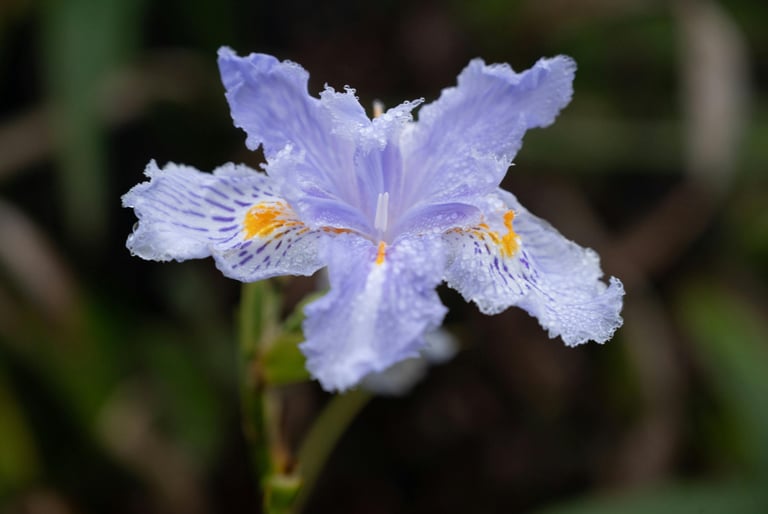

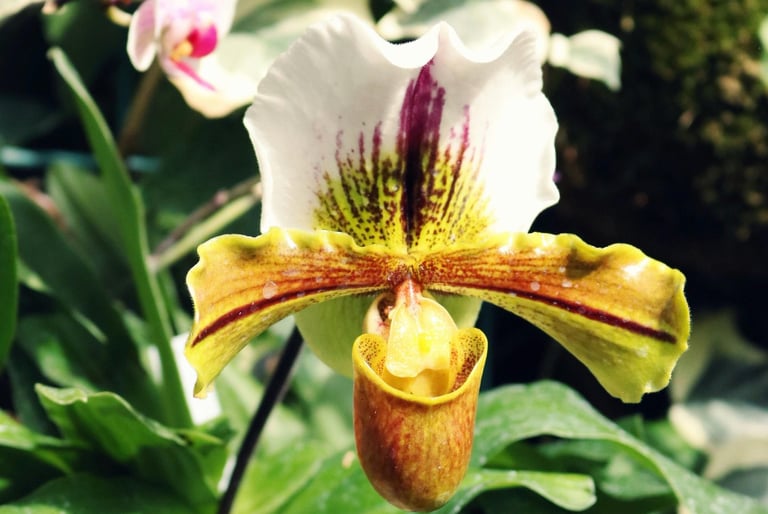

The Carnation
The carnation is one of the oldest cultivated flowers in the world, known for its distinctive ruffled petals and rich symbolism. Scientifically named Dianthus caryophyllus, which translates to “flower of the gods,” carnations have long been celebrated for their association with love, fascination, and distinction. With a history deeply rooted in tradition and culture, carnations have become powerful symbols used in celebrations, rituals, and meaningful personal moments worldwide.
Historical and Cultural Significance
Carnations have a long-standing reputation for longevity and resilience, qualities that have made them enduring symbols of lasting love and devotion. In ancient Rome, carnations were used to craft ceremonial crowns, symbolizing honor and respect. Christian traditions tell of carnations blooming where the Virgin Mary’s tears fell, linking the flower closely to the theme of a mother’s undying love and care. This connection remains strong today, as carnations are recognized as the official flower of Mother’s Day, embodying gratitude, affection, and remembrance for maternal figures.
Carnations as Symbols of Remembrance and Solidarity
Beyond personal symbolism, carnations also play a significant role in expressing remembrance, respect, and solidarity. They are frequently worn or displayed during military and memorial ceremonies, where they represent sacrifice and honor. Additionally, carnations have been embraced in religious and political movements, notably in international labor causes, where the flower symbolizes unity, strength, and the dignity of the working class.
Versatility and Meaning in Modern Use
Carnations are celebrated not only for their symbolic depth but also for their durability and vibrant appearance. Their ability to last long and maintain their beauty makes them a favored choice for bouquets intended to honor relationships that stand the test of time. Whether used to celebrate a new birth, express admiration, honor a parent, or commemorate a loved one, carnations serve as a classic and meaningful floral messenger.
Their versatility is enhanced by their wide availability and affordability, allowing them to be accessible for a variety of occasions while maintaining a sense of elegance and heartfelt significance.
To learn more about each kind of carnation, click below:
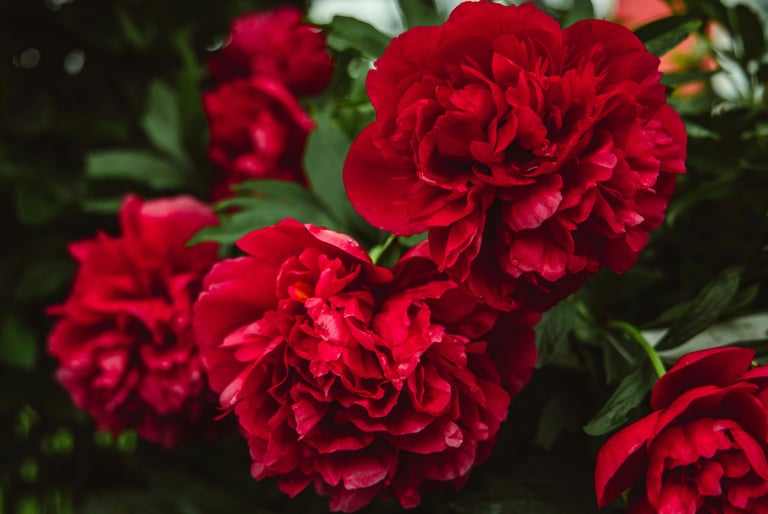

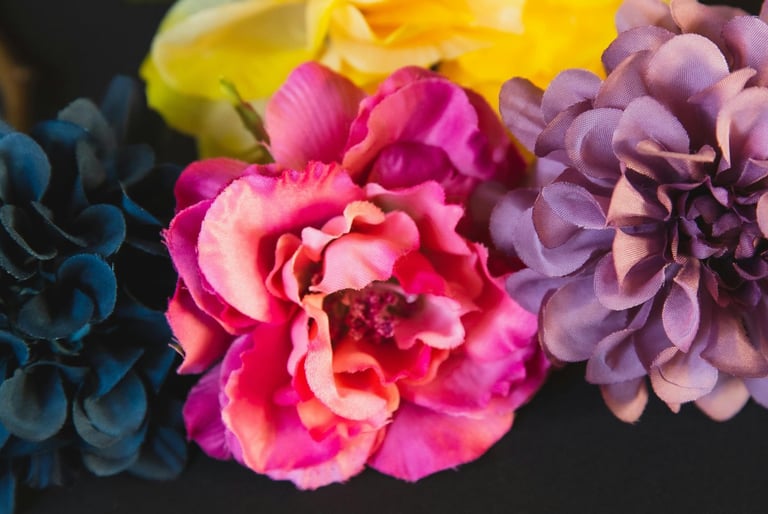

The Orchid
The orchid is a flower of rare beauty and deep symbolic meaning, admired worldwide for its exotic appearance and delicate, symmetrical petals. With a wide variety of shapes and forms, orchids have fascinated cultures for centuries, embodying luxury, strength, beauty, and refinement. Across many traditions, the orchid represents love, fertility, and spiritual growth, making it a flower rich in both emotional depth and cultural significance.
Origins and Cultural Importance
Originating in tropical regions spanning Asia, Central and South America, and parts of Africa, orchids have long been associated with mystery and rarity. In ancient Greece, orchids were linked to virility and fertility, with beliefs that consuming certain orchids could influence the gender of a child. In Chinese culture, orchids are symbols of nobility, moral integrity, and scholarly achievement, frequently appearing in art and poetry as emblems of refinement and inner strength.
Symbolism of Strength and Perseverance
Due to their specific growth requirements and delicate nature, orchids have come to symbolize strength, perseverance, and rare beauty—qualities that are highly valued yet not easily attained. During the Victorian era, orchids were considered luxurious gifts, reflecting the giver’s admiration for the recipient’s uniqueness and sophistication.
This association with endurance and elegance has made orchids timeless symbols of resilience and extraordinary grace, reminding us that true beauty often requires patience and care to flourish.
Orchids in Modern Life and Gifting
Today, orchids remain cherished not only for their stunning appearance but also for the deep meanings they convey in personal relationships and life journeys. They are often gifted to celebrate important milestones, express sophisticated love, or honor someone’s strength and individuality.
Whether displayed in a serene home environment, given as a delicate bouquet, or included in meaningful ceremonies, orchids continue to embody elegance, depth, and timeless beauty.
To Learn More About Each Kind of Orchid, Click Below:
Pink Orchid Purple Orchid White Orchid Yellow Orchid
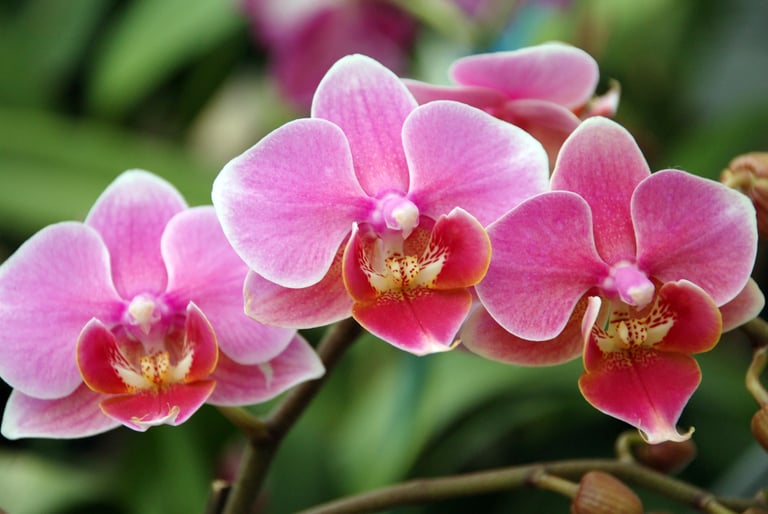


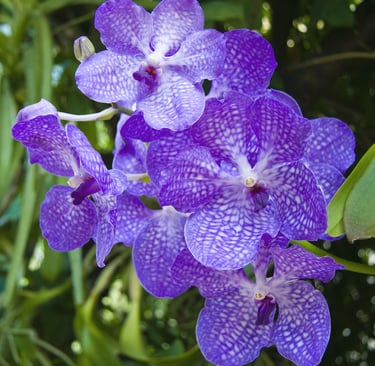
The Sunflower
Sunflowers are among the most recognizable and cherished flowers worldwide, admired not only for their striking appearance but also for their rich symbolic meanings. Known for their large, radiant blooms and unique ability to turn and follow the sun throughout the day—a phenomenon called heliotropism—sunflowers have long represented happiness, warmth, loyalty, and spiritual faith.
Symbolism of Joy and Positivity
The sunflower’s bright and bold presence naturally evokes feelings of joy, vitality, and optimism. Across many cultures, sunflowers are seen as symbols of unwavering hope and encouragement, reminding us to remain positive and focused on brighter days ahead, regardless of life’s challenges. Their connection to the sun inspires a sense of light, energy, and growth, encouraging individuals to embrace their own strength and confidence.
Cultural Significance and Historical Roots
In Chinese culture, sunflowers are associated with good luck, longevity, and prosperity, making them a favored gift for celebrations and new beginnings. During the Victorian era, sunflowers symbolized devotion and pure thoughts, often given to express admiration and loyalty. Their towering height and sturdy stems further symbolize strength, resilience, and the courage to stand tall even in difficult circumstances.
Beyond symbolism, sunflowers have practical uses as well: they provide food, oil, and sustainable materials, linking the flower to themes of abundance and eco-friendliness.
Artistic and Emotional Influence
Sunflowers have also left a lasting mark in the world of art and emotional expression. Artists like Vincent van Gogh famously captured their vibrancy and energy, solidifying their reputation as a flower that embodies emotional warmth and inner radiance.
Modern Meaning and Uses
Whether featured in bouquets, planted in gardens, or given as thoughtful gifts, sunflowers convey messages of cheerfulness, resilience, and connection to nature’s rhythms. They remind us to seek light, remain grounded, and share our warmth with others. Their presence encourages growth, perseverance, and an optimistic outlook on life.
To Learn More About Each Kind of Sunflower, Click Below:

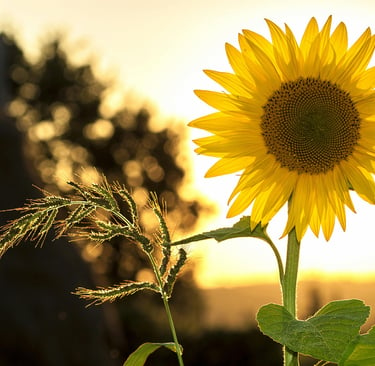
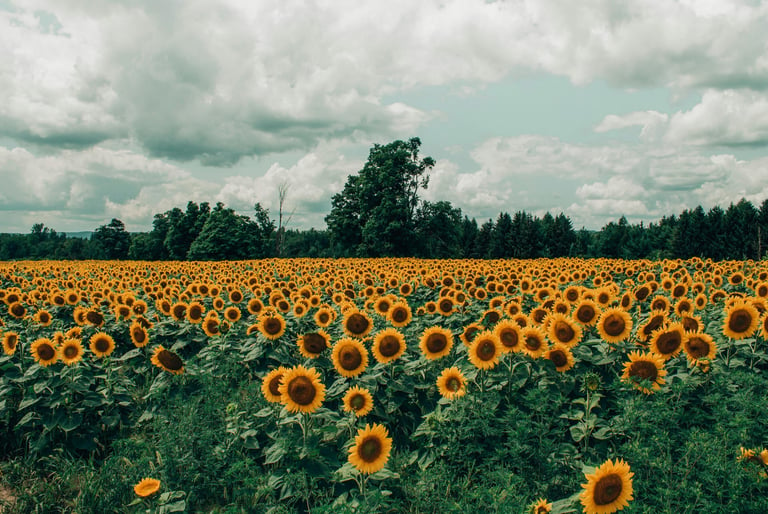

The Azalea
Azaleas are delicate and vibrant flowers celebrated for their stunning clusters of blossoms and lush foliage. They hold rich symbolism and have long been associated with femininity, fragile beauty, and passionate emotion. In the language of flowers, azaleas often convey messages of love, care, and temperance, making them a meaningful gift for expressing heartfelt emotions in a gentle and elegant way.
Symbolism of Balance and Emotional Depth
The graceful blooms of azaleas symbolize beauty in moderation, reminding us to live with balance, appreciate subtlety, and honor the quiet strength found in softness. Their presence encourages gentleness, empathy, and emotional resilience, qualities that resonate deeply in both personal relationships and self-care.
Cultural Significance
In many Asian cultures—particularly in China, Japan, and Korea—azaleas carry profound cultural meanings. They are regarded as symbols of home, family, and the emotional ties that bind us, often planted near homes or gifted to express wishes for harmony and protection within domestic life. In Korea, azaleas mark the arrival of spring and abundance, symbolizing renewal, hope, and personal growth as nature transitions from winter’s cold to warmer days.
Dual Meaning: Love and Caution
Azaleas also hold a dualistic symbolism, representing both love and caution. In Victorian floriography, azaleas conveyed a thoughtful warning—messages such as “take care of yourself for me” or “be careful” were often expressed through this bloom. This layered meaning makes azaleas especially meaningful gifts during times of change, healing, or new beginnings, offering both affection and concern.
Use in Gardens, Ceremonies, and Memorials
Due to their visual beauty and emotional resonance, azaleas are frequently used in gardens, ceremonies, and memorials. They invite reflection on the emotional landscapes we navigate daily, encouraging a spirit of grace, empathy, and quiet strength. Their blooming season in spring further reinforces themes of rebirth, youth, and fresh starts, making them fitting symbols for new chapters in life.
To Learn More About Each Kind of Azalea, Click Below:
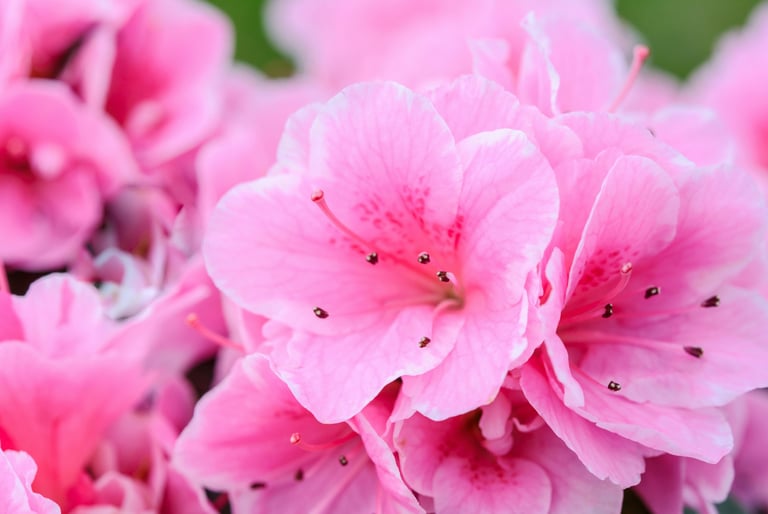

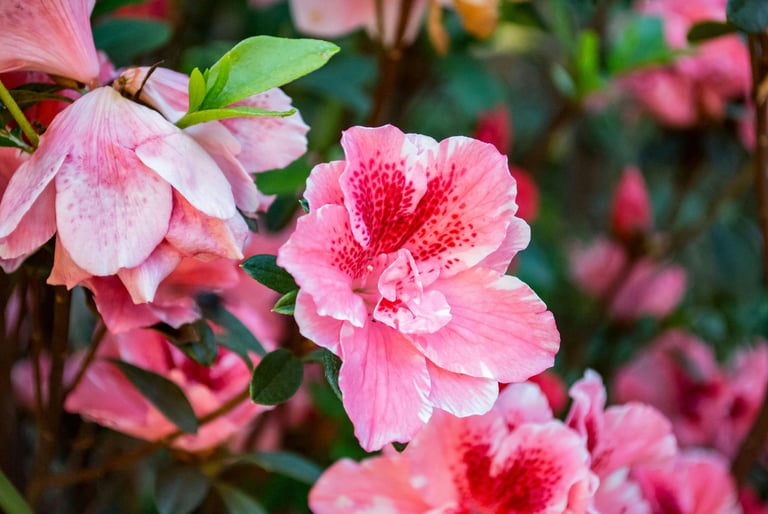

Daisies are more than just cheerful wildflowers—they carry a rich tapestry of symbolism deeply rooted in history, culture, and nature. Their simple beauty reflects innocence, purity, and childlike joy, making them a timeless symbol of new beginnings and fresh starts.
Origins and Cultural Significance
The name “daisy” comes from Old English, meaning “day’s eye,” a reference to the flower’s habit of opening at dawn and closing at dusk. This behavior symbolizes the cyclical nature of life, renewal, and hope. In Norse mythology, daisies were sacred to Freya, the goddess of love, beauty, and fertility, which associates the flower with motherhood and childbirth. As such, daisies have long been used to celebrate birth, growth, and springtime festivities.
Symbols of Loyalty and Friendship
Beyond innocence, daisies embody loyal love, trust, and true friendship. Their structure—with a central disc surrounded by petals—has been interpreted as a metaphor for harmony, unity, and emotional balance. In Victorian floriography, daisies conveyed affection, loyalty, and light-hearted feelings, often exchanged between close friends or young lovers as a token of sincere emotion.
Resilience and Endurance
Daisies are hardy flowers that thrive in wild, untamed environments, symbolizing resilience, hope, and endurance. Their ability to bloom in modest conditions reminds us of the strength found in simplicity and the power of persistence.
Playfulness and Youthful Spirit
Children have long incorporated daisies into playful traditions, such as “loves me, loves me not” games or weaving them into flower crowns. These associations reinforce the daisy’s image as a symbol of playful youth, carefree spirit, and joyful innocence.
Practical and Symbolic Uses
Whether featured in floral arrangements, garden beds, or symbolic artwork, daisies continue to evoke themes of fresh starts, trust, and the brightness of life’s simple moments. In a complex world, the daisy encourages us to return to innocence, maintain hope, and cherish the little joys that enrich our lives.
To Learn More About Each Kind of Daisy, Click Below:
The Daisy
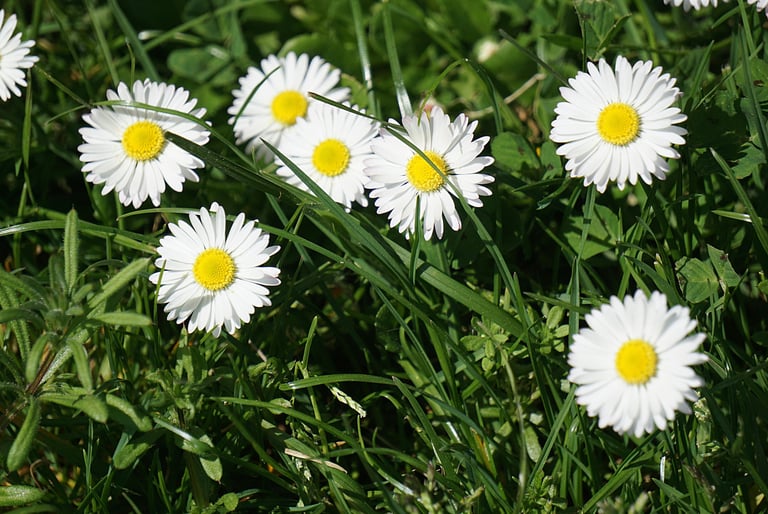

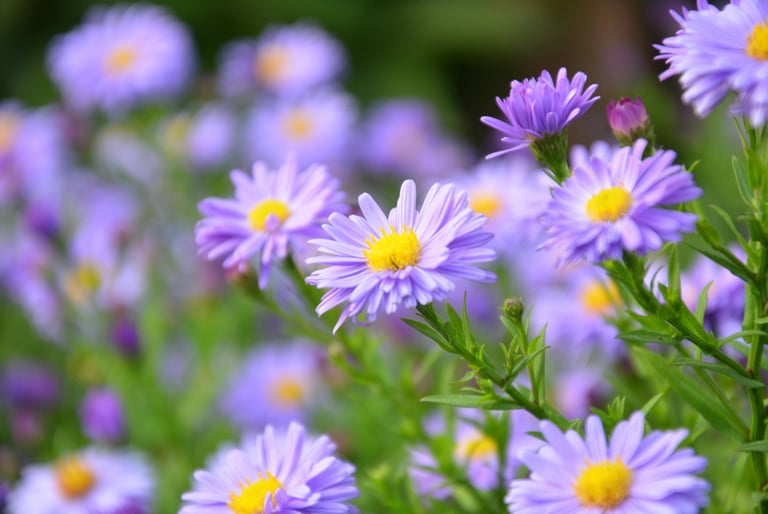

Hydrangeas are lush, full-bodied flowers known for their large, rounded clusters that create a stunning visual impact. Beyond their delicate beauty, hydrangeas carry deep symbolic meaning, often representing heartfelt emotion, gratitude, understanding, and strong connections. Their many tiny petals gathered together symbolize unity and abundance, making hydrangeas a popular choice for weddings, anniversaries, and celebrations focused on togetherness.
Adaptability and Emotional Depth
One of the most unique traits of hydrangeas is their ability to change color based on the pH of the soil they grow in. This natural phenomenon has inspired the flower’s association with adaptability and transformation. Because of this, hydrangeas symbolize the ever-changing nature of emotions and are ideal for expressing subtle feelings that can be difficult to articulate.
Cultural Significance
In Japanese culture, hydrangeas hold special importance as symbols of apology, grace, and heartfelt sincerity. They are often gifted to say “I’m sorry” or “thank you for understanding,” emphasizing themes of forgiveness and emotional honesty. Their presence in traditional Japanese gardens highlights honor, reflection, and genuine feelings.
During the Victorian era, hydrangeas had mixed symbolism. While sometimes linked to boastfulness or vanity due to their extravagant blooms, they were also recognized for conveying gratitude and heartfelt appreciation in social settings.
Modern Use and Symbolism
Today, hydrangeas remain a meaningful flower that conveys gratitude, grace, and emotional depth. They are perfect for occasions requiring more than simple words—whether to express thanks, seek reconciliation, or celebrate lasting emotional bonds. Their ability to flourish in various conditions also makes hydrangeas a symbol of resilience and quiet strength, reinforcing their emotional significance.
To Learn More About Each Kind of Hydrangea, Click Below:
Purple Hydrangea Pink Hydrangea Blue Hydrangea
The Hydrangea
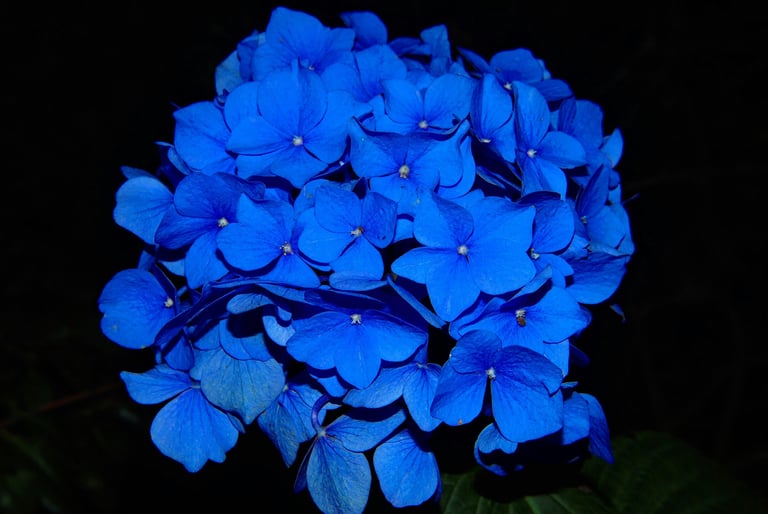

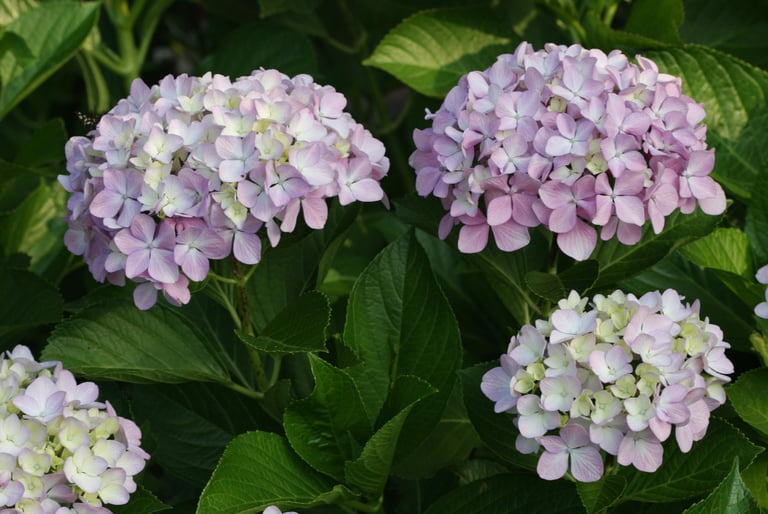

Lilies are widely recognized as one of the most elegant and meaningful flowers globally. Known for their striking beauty and deep symbolic significance, lilies have been celebrated across cultures for centuries. They are often associated with purity, renewal, and spiritual transformation, making them popular choices for important life events and ceremonies.
Religious and Cultural Importance
In many religious traditions, lilies hold profound symbolism. In Christianity, the white lily, also called the Madonna Lily, represents innocence, grace, and divine love, symbolizing the Virgin Mary. This connection makes lilies common at weddings and baptisms, where they mark new beginnings and spiritual devotion. Lilies are also frequently used at funerals, symbolizing the soul’s passage, transformation, and hope for renewal after loss. Their delicate, fleeting blooms remind us of life’s impermanence and the promise of rebirth.
Symbol of Serenity and Elegance
Lilies convey more than spiritual meaning; they also evoke a sense of calm, serenity, and refined beauty. Their tall stems and trumpet-shaped flowers create a regal and graceful presence that uplifts any setting—whether in a bouquet for celebrations or a garden for peaceful contemplation. These qualities make lilies a powerful symbol of inner peace, purity of heart, and the sacredness of life’s important moments.
Timeless and Versatile Floral Symbol
With their rich history and universal appeal, lilies remain a timeless floral choice. Their versatility and layered meanings make them suitable for a wide range of occasions, from joyful celebrations to solemn remembrances. As a flower that combines elegance with profound symbolism, lilies continue to resonate deeply, reminding us of renewal, grace, and spiritual strength.
The Lily
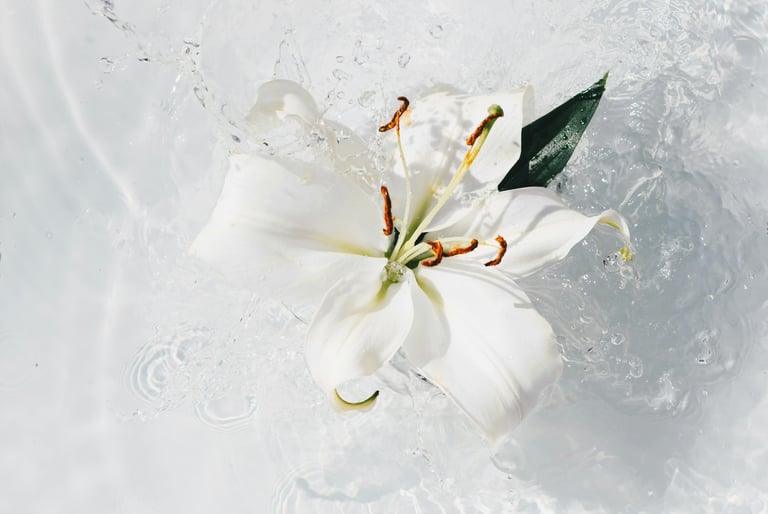

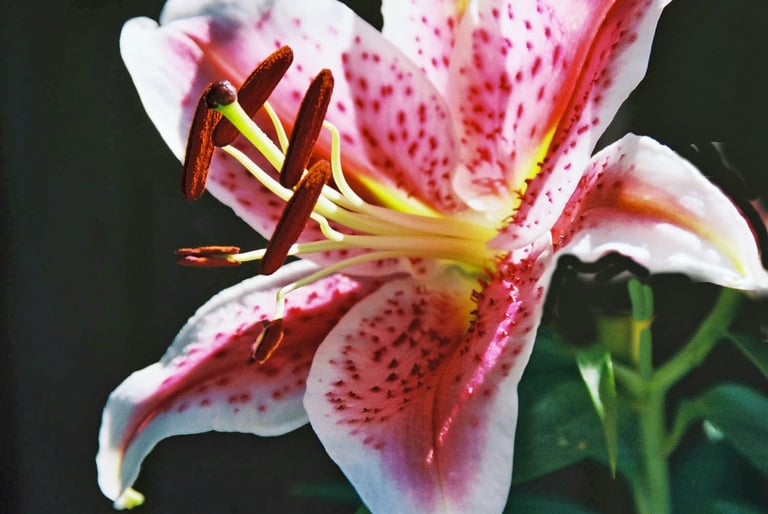

Peonies are renowned for their lush, full blooms and captivating fragrance, making them one of the most cherished flowers worldwide. Rich in cultural and historical significance, peonies have been admired for centuries as symbols of romance, prosperity, and honor.
Cultural Significance Across the World
In many Eastern cultures, particularly in China, the peony is celebrated as the “king of flowers”, symbolizing wealth, good fortune, and nobility. It has long been featured in art and literature as an emblem of imperial elegance and high social status. In contrast, Western traditions often associate peonies with love, healing, and beauty. They are a popular choice for weddings and romantic occasions, where their abundant petals signify enduring affection, happiness, and good luck in relationships.
Symbolism of Renewal and Emotional Balance
Peonies bloom in late spring to early summer, linking them to themes of renewal and the fleeting nature of beauty. In Japanese Hanakotoba, or the language of flowers, peonies symbolize bravery, compassion, and a noble heart. Their delicate appearance paired with a hardy nature reflects the balance between strength and softness found in human emotions. This dual symbolism makes peonies especially meaningful in expressing complex feelings such as personal growth, forgiveness, and hope.
Versatility and Emotional Expression
Whether included in floral arrangements, cultivated in gardens, or given as symbolic gifts, peonies remain a timeless way to convey heartfelt emotions and well-wishes. Their universal appeal lies in their ability to represent not only romantic love but also deeper messages of honor, resilience, and cherished life moments.
The Peony
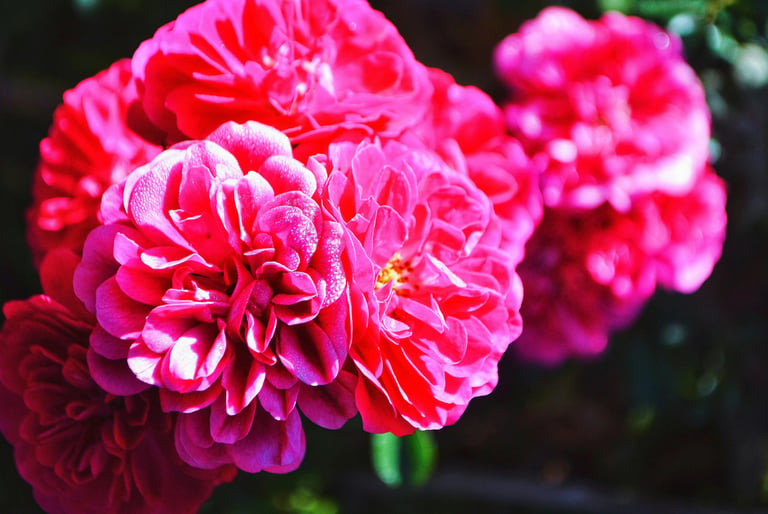

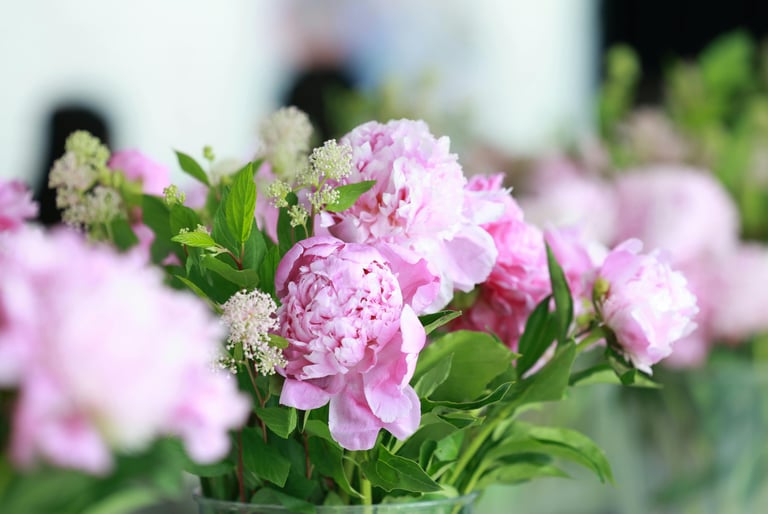

Begonias are celebrated for their striking foliage, delicate blossoms, and versatile growing habits. With over 2,000 known species worldwide, these flowering plants vary widely in shape, color, and size, making them a favorite among gardeners, florists, and indoor plant enthusiasts. Originally native to tropical and subtropical regions—including Central and South America, Africa, and Asia—begonias flourish in warm, humid environments and adapt well to both indoor containers and outdoor gardens.
Symbolism: Caution, Emotion, and Creativity
In the Victorian language of flowers, begonias symbolized caution and thoughtful concern. When given as a gift, they sent a subtle message: “Take care” or “Proceed thoughtfully”—a gesture rooted in protection and emotional care. This symbolism reflects the begonia’s place in more reflective or nuanced moments, offering a quiet reminder of mindfulness and emotional awareness.
Despite their cautious undertone, begonias also represent gratitude, individuality, and creative expression. Their vibrant hues and dramatic leaves speak to boldness and uniqueness, making them a powerful symbol for those who embrace originality and heartfelt sentiment.
Cultural and Botanical Importance
Beyond their symbolic meaning, begonias carry significance in various cultures. In Chinese traditions, begonias are sometimes associated with harmony and peaceful living, aligning with feng shui practices when placed strategically within the home.
Botanically, begonias belong to the Begoniaceae family and are categorized into key types:
Fibrous-rooted begonias
Rhizomatous begonias
Tuberous begonias
Each type has its own unique growth habits and flower forms, but all share similar care requirements, thriving best in filtered sunlight, well-draining soil, and moderate moisture levels.
Care and Growing Conditions
Caring for begonias requires a careful balance. They are sensitive to both overwatering and drought. Consistent moisture without waterlogging is key, along with adequate airflow to prevent fungal issues. When well-maintained, begonias offer continuous blooms throughout the growing season and add lasting charm to any space.
Their ability to combine visual richness with subtle emotional meaning makes begonias a standout in both ornamental gardening and symbolic floral gifting. They invite us to admire beauty while remaining grounded in care, reflection, and intention.
The Begonia
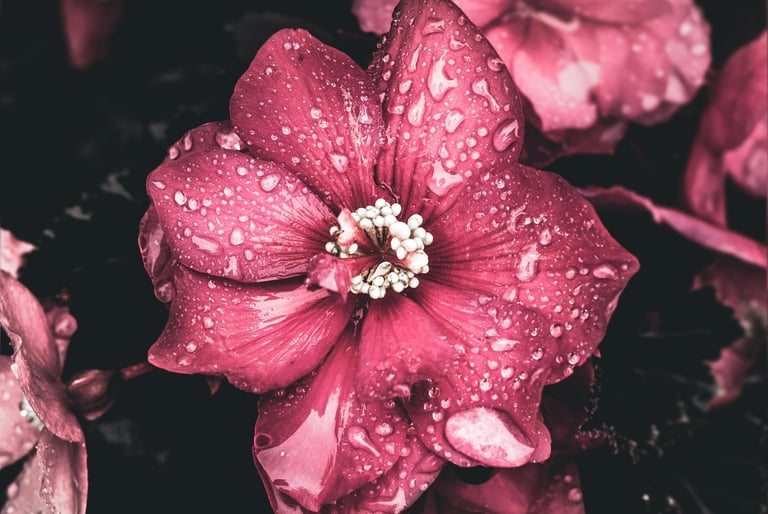


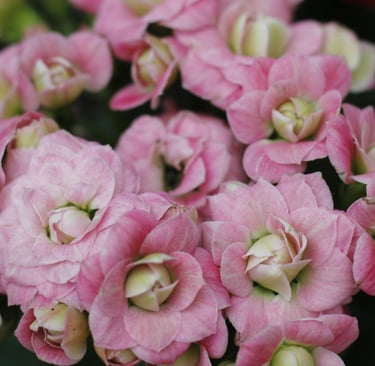
The daffodil, also known by its botanical name Narcissus, is one of the most cherished flowers of early spring. Known for its trumpet-like shape and cheerful bloom, the daffodil carries a powerful message of renewal, new beginnings, and resilience. Its appearance signals the end of winter and the return of light—making it a natural symbol of emotional healing, transformation, and hope.
Cultural and Historical Significance
The daffodil holds meaning across numerous cultural traditions. In Western cultures, it is often seen as a symbol of optimism and fresh starts, thanks to its seasonal timing. In Greek mythology, the flower’s name comes from the story of Narcissus, a youth who became so captivated by his reflection that he faded away, and from that place, a daffodil bloomed. This legend adds a deeper, more introspective layer to the flower’s meaning—often linked to self-awareness, introspection, and the balance between admiration and humility.
In modern symbolism, daffodils have evolved to represent hope in times of struggle. They are especially recognized for their role in medical charity campaigns, such as the American Cancer Society’s Daffodil Days, where they serve as an emblem of encouragement and perseverance.
Symbolism in the Language of Flowers
In Victorian floriography (the historical language of flowers), daffodils carried a message of new beginnings, especially in love, friendship, or personal growth. A single daffodil could symbolize misfortune, but a bunch of daffodils represented good luck, happiness, and renewal—emphasizing the importance of abundance and unity in symbolic gifting.
While most daffodils are known for their bright yellow hue, color variations also influence meaning.
Botanical Characteristics and Growing Tips
Daffodils are members of the Amaryllidaceae family and thrive in temperate climates. These hardy perennial bulbs require minimal care, preferring well-draining soil, ample sunlight, and a cool winter dormancy to prepare for early spring blooms.
They are ideal for both home gardens and public landscapes, where they serve as a visual celebration of seasonal change. Daffodils also do well in memorial plantings, where their symbolism of life after loss offers emotional comfort.
Why Daffodils Remain Timeless
From mythology to medicine, the daffodil’s symbolism spans both the inner journey of self-discovery and the shared hope for renewal. It remains one of the most uplifting and meaningful flowers, reminding us that no matter how harsh the winter, spring always follows. Whether planted to brighten a garden or given as a thoughtful gift, daffodils express the enduring power of resilience, joy, and new life.
The Daffodil
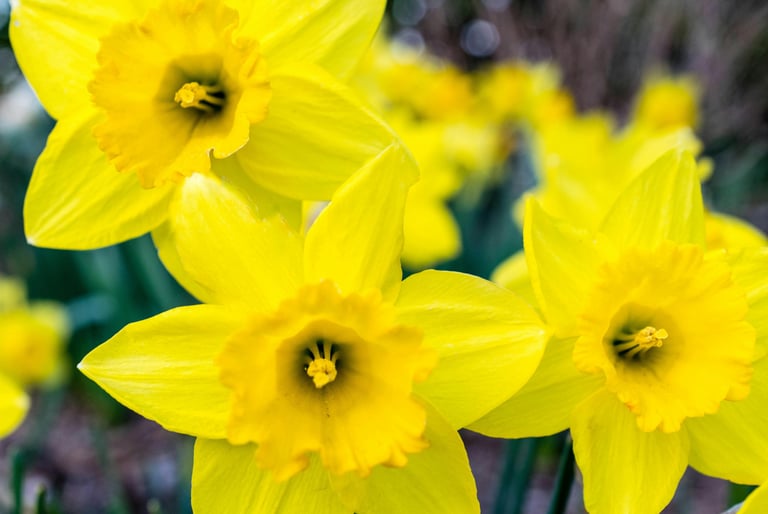

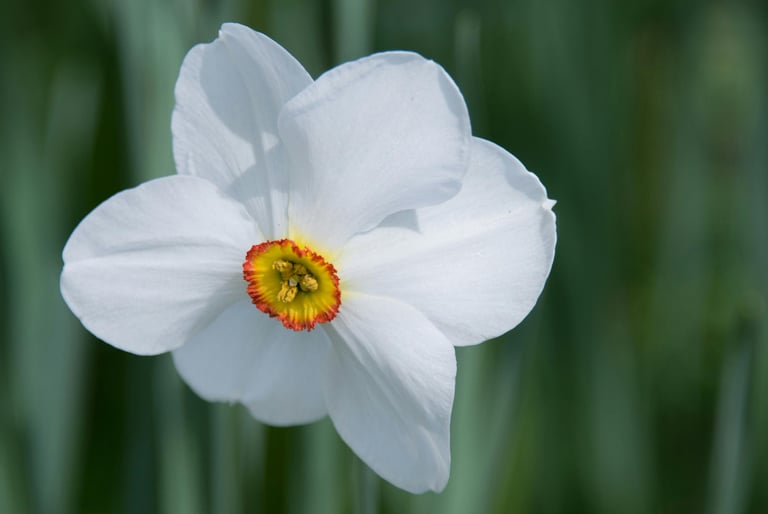

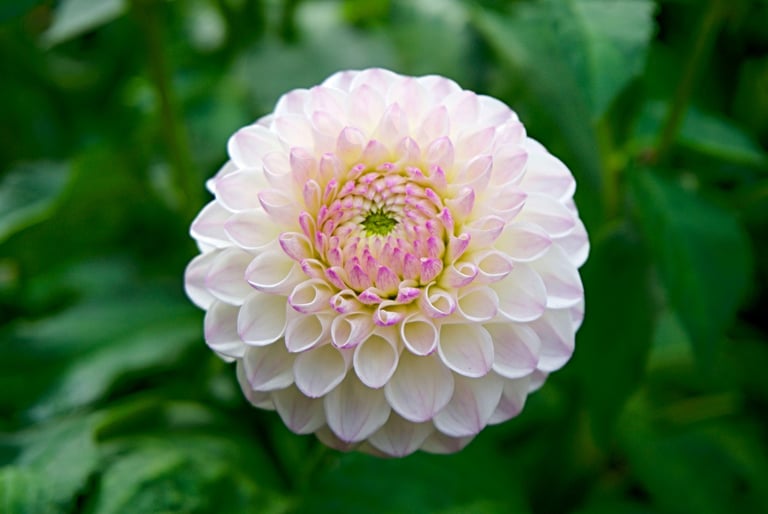

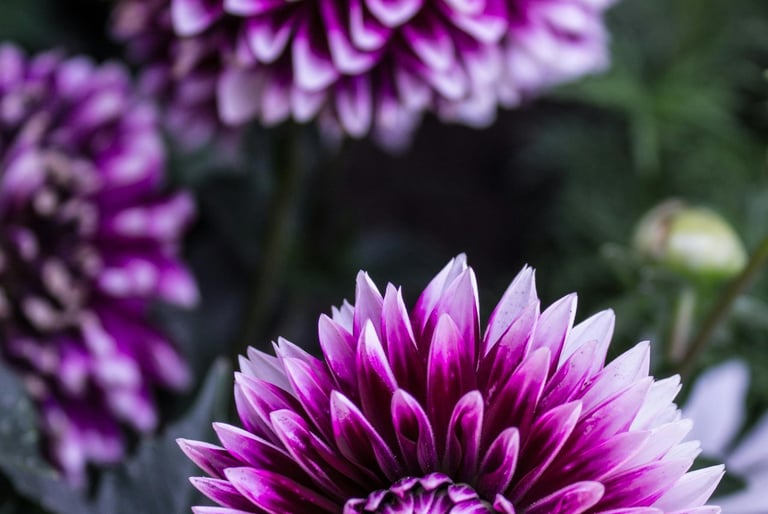

The dahlia is a visually captivating flower known for its layered petals, complex structure, and wide range of sizes and forms. Native to Mexico and Central America, this bloom has held cultural, botanical, and symbolic significance for centuries. First cultivated by the Aztecs for both ornamental and medicinal use, the dahlia was introduced to Europe in the 18th century, where it quickly became associated with sophistication, creativity, and inner resilience.
Today, with over 40 recognized species and thousands of cultivars, dahlias are celebrated not just for their beauty but for the depth of meaning they carry—making them a flower of emotional and symbolic richness.
Symbolism and Emotional Meaning
Dahlias are widely regarded as symbols of personal strength, dignity, and growth through adversity. Despite their delicate appearance, dahlias thrive in a variety of conditions, representing grace under pressure and the ability to stand strong in the face of challenges.
In the Victorian language of flowers, dahlias were often used to convey a lasting bond or commitment. This made them especially meaningful in wedding bouquets or gifts intended to express loyalty, admiration, and emotional maturity.
Their intricate petals folding inward suggest layers of experience, mirroring a person’s inner complexity and evolution. As such, the dahlia has become a symbol of the journey toward self-discovery, emotional resilience, and elegant strength.
Cultural and Historical Significance
The dahlia holds a special place in Mexican heritage, where it is honored as the national flower of Mexico. It stands as a celebration of native biodiversity and cultural pride. In Day of the Dead traditions, dahlias are often included among the flowers used to honor ancestors and celebrate the continuity of life.
The flower’s presence in European botanical gardens during the 19th century further cemented its association with wealth, refinement, and intellectual curiosity—particularly among collectors and naturalists.
Botanical Profile and Growing Conditions
Dahlias are part of the Asteraceae family, making them relatives of sunflowers and daisies. Their diversity in form ranges from small, tightly-formed pom varieties to dinner-plate-sized blooms, each offering a different visual impact.
Gardeners appreciate dahlias for their long blooming season, which typically extends from mid-summer through the first frost. These flowers perform best in full sun, with well-drained soil and consistent watering. While they require a bit of care, the results are stunning and long-lasting.
Whether featured in garden beds, cut flower arrangements, or symbolic floral gifts, dahlias offer a blend of beauty and meaning that few other flowers can match.
Why Dahlias Continue to Captivate
Dahlias are more than just striking blooms—they are powerful metaphors for personal transformation, emotional strength, and the elegance that comes from overcoming challenges. Their symbolic depth and wide appeal make them a favorite among florists, gardeners, and anyone seeking to convey a message of grace, resilience, and inner beauty.
The Dahlia
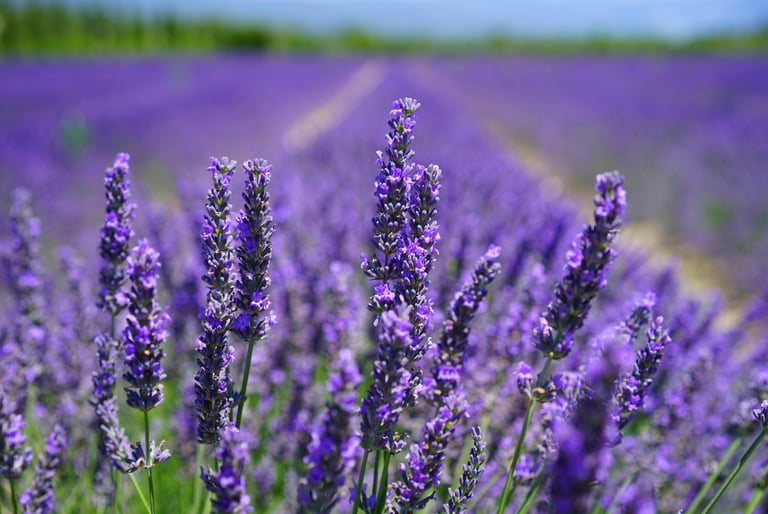

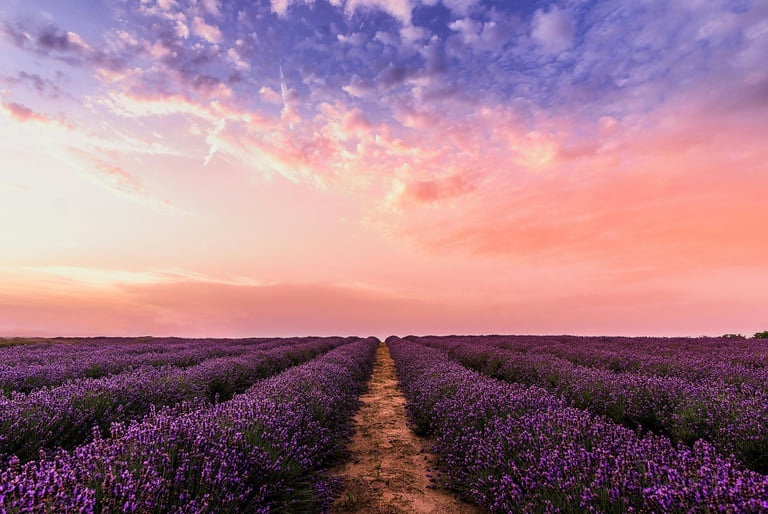

Lavender is more than just a fragrant herb or a garden favorite—it is a plant deeply tied to themes of tranquility, healing, and spiritual awareness. With its delicate blossoms and soothing aroma, lavender has earned a place not only in herbal medicine and aromatherapy but also in cultural symbolism across centuries. Known for promoting emotional balance and inner peace, lavender continues to be a powerful symbol of serenity and well-being.
Symbolism and Emotional Meaning
Lavender is most commonly associated with peace, calm, and restoration. In the language of flowers, it conveys devotion, grace, and quiet strength. Its gentle, clean scent has long been used to reduce anxiety, ease stress, and support restful sleep, making it a natural symbol of emotional clarity and mental wellness.
Lavender encourages mindfulness and self-care. Whether through its use in essential oils, teas, or dried arrangements, the presence of lavender offers a subtle invitation to slow down and reconnect with a sense of inner stability. It symbolizes the kind of strength that comes not from force, but from stillness and quiet resilience.
Spiritual and Cultural Significance
Lavender’s soft purple hue connects it to the crown chakra, a symbol of spiritual connection, enlightenment, and intuition. It has been used in spiritual practices for cleansing negative energy, supporting meditation, and encouraging personal growth.
Historically, lavender held a special role in purification rituals. In ancient Egypt, Greece, and Rome, it was used to cleanse both the body and the home. Its name comes from the Latin lavare, meaning “to wash,” which reflects its enduring association with cleansing, renewal, and spiritual clarity.
Healing and Practical Uses
For centuries, lavender has played a significant role in herbal medicine and traditional healing. Its essential oils and dried flowers are used to relieve headaches, reduce tension, and promote deep rest. These healing qualities reinforce lavender’s symbolic connection to caregiving, comfort, and emotional support.
Today, lavender is a common ingredient in aromatherapy, natural sleep aids, and home care rituals—offering not only physical relief but emotional healing as well.
Who Lavender Symbolizes and When to Give It
Lavender is often associated with individuals who offer calm, empathy, and compassion—such as caregivers, counselors, and spiritual guides. Giving lavender, whether fresh, dried, or in a product, expresses loyalty, healing, and a commitment to someone’s well-being.
It’s especially meaningful during times of transition, grief, or recovery, where its gentle presence offers quiet encouragement and support. Lavender gifts can be thoughtful during:
Personal milestones or changes
Times of stress or emotional need
Expressions of sympathy and comfort
Gestures of appreciation for someone’s steady presence
Lavender’s Lasting Presence
Whether blooming in a field, infusing a calming tea, or resting beside a bedside table, lavender remains a symbol of gentle renewal, inner peace, and emotional balance. Its timeless beauty and restorative power remind us that healing doesn’t always have to be loud—sometimes, it comes in the form of softness, stillness, and fragrant simplicity.
The Lavender
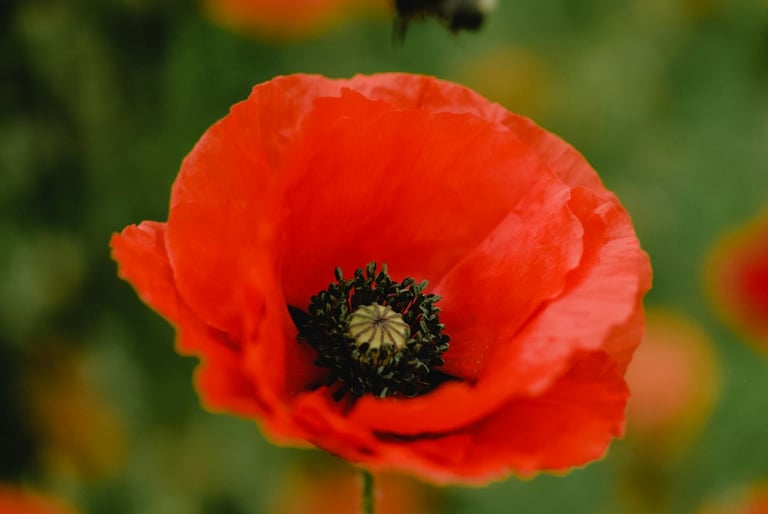

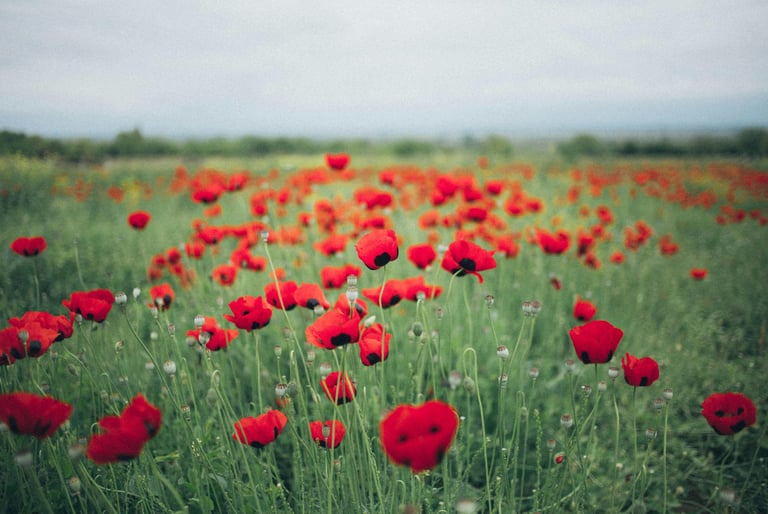

The poppy is a flower rich in emotion, history, and quiet strength. Known for its delicate petals and graceful posture, the poppy holds deep symbolic meaning that bridges the worlds of memory, peace, and inner transformation. More than a wildflower, the poppy is a timeless emblem of reflection and renewal, carrying layers of significance across cultures and centuries.
Symbolism and Emotional Meaning
At its core, the poppy represents remembrance, emotional release, and the gentle passage from pain to peace. Often associated with eternal rest and reflection, the poppy invites us to slow down and connect with our inner world. It is a flower that honors the past, while encouraging healing and forward movement.
Its soft, flowing petals reflect the idea that even in times of sorrow, beauty and peace can still emerge. The poppy does not force its presence; instead, it grows quietly and often unexpectedly—symbolizing the coexistence of vulnerability and strength.
Historical and Cultural Significance
The poppy’s symbolism dates back to ancient Greece and Rome, where it was linked to deities of sleep and death due to its natural sedative properties. In this context, the flower was seen as a guide to the subconscious—a symbol of dreams, emotional surrender, and the restoration of the soul.
Today, the poppy is perhaps most recognized for its role in commemoration and remembrance. Used around the world to honor fallen soldiers and lost loved ones, the poppy represents gratitude, legacy, and the quiet power of memory. It has become a universal symbol of honoring the past while continuing to grow and heal.
Emotional Strength and Resilience
Despite its delicate appearance, the poppy often grows in harsh conditions—sometimes emerging from rocky or barren landscapes. This unique quality gives the flower its powerful symbolism of resilience through softness. It teaches us that strength does not always appear bold or loud; sometimes, it is gentle, rooted, and steady.
The poppy’s ability to thrive where other flowers might not makes it a powerful emblem for anyone moving through grief, transition, or personal growth. It reminds us that even in difficult seasons, transformation and peace are possible.
When and Why to Give or Plant Poppies
The poppy is a meaningful choice for moments of remembrance, healing, and spiritual reflection. It may be planted in gardens, used in memorial arrangements, or given as a symbolic gesture of support and reflection. Situations where the poppy holds deep value include:
Honoring a loved one’s memory
Offering support during grief or loss
Acknowledging a time of emotional change or recovery
Inviting quiet strength into personal or meditative spaces
Whether presented alone or among other flowers, the poppy carries a message of peaceful transformation and the enduring presence of the soul.
A Flower of Reflection and Renewal
The poppy is more than a symbol of remembrance—it is a guide back to emotional clarity and inner calm. Through its graceful presence, the flower encourages us to reflect, release, and reconnect with the moments and memories that shape us. In a world that moves quickly, the poppy offers a still point—a quiet reminder that peace can be found, even in life’s most complex and tender moments.
The Poppy

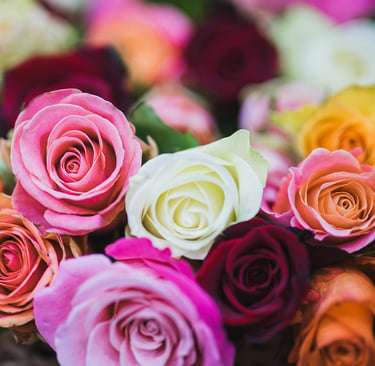
The amaryllis is more than a dramatic holiday bloom—it is a timeless symbol of personal power, grace under pressure, and inner resilience. With its tall stems and trumpet-shaped flowers, the amaryllis stands out in both appearance and meaning. It represents the kind of strength that grows quietly and blooms boldly, even in challenging environments.
Blooming indoors during the winter months, the amaryllis is often seen as a flower of triumph and transformation, offering a striking reminder that even in dormant seasons, growth and beauty are still possible.
The Symbolism of Amaryllis Flowers
In the language of flowers, the amaryllis conveys powerful emotional messages:
Strength and Confidence – Celebrating inner resolve and courage
Pride and Determination – Honoring the ability to overcome adversity
Beauty with Depth – Reflecting elegance, charm, and intellectual presence
Achievement and Personal Growth – Marking milestones and hard-earned success
These qualities make the amaryllis a meaningful gift for those experiencing transitions, celebrating accomplishments, or navigating periods of self-discovery.
Mythology and Origins
The name "amaryllis" originates from Greek mythology, derived from a shepherdess named Amaryllis who pierced her heart to prove her love. From her blood, a beautiful red flower bloomed—symbolizing passion, vulnerability, and the transformative power of love and sacrifice.
Native to South and Central America, particularly regions like Brazil and Peru, the amaryllis was introduced to Europe in the 18th century and has since become a symbol of holiday elegance, often blooming indoors when most other flowers lie dormant.
Emotional and Symbolic Use
Amaryllis flowers are ideal for expressing:
Support for someone facing a challenge
Celebration of personal victories or promotions
Recognition of emotional resilience or inner healing
A thoughtful gesture of encouragement and admiration
The flower’s bold blooms speak volumes, making it an excellent addition to gifts, ceremonies, or home decor during times of reflection or change.
A Winter Bloom That Defies the Season
One of the most remarkable traits of the amaryllis is its ability to bloom in mid-winter—a time when most gardens are bare. This makes it a living metaphor for hope, renewal, and courage in the face of stillness. Its tall, sturdy stalks and radiant flowers remind us that grace can rise even in the most unlikely seasons.
The Amaryllis
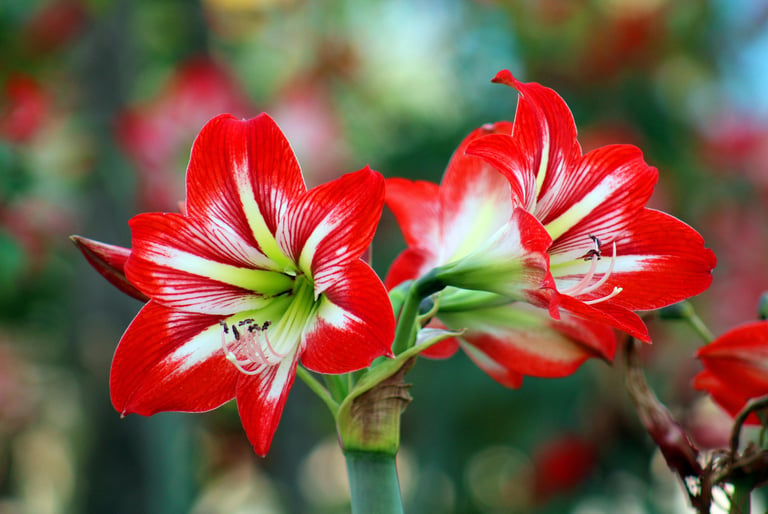


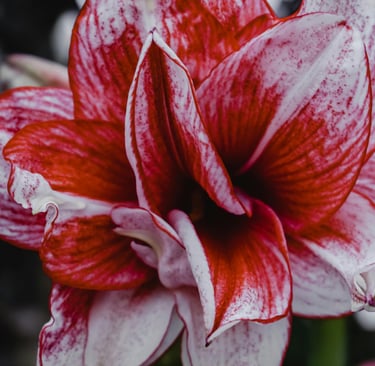
Chamomile is more than just a calming herb—it is a timeless symbol of serenity, gentle strength, and restorative energy. Known for its small white petals and golden center, chamomile may appear delicate, but it carries a deep message of emotional balance, quiet resilience, and inner peace. Long used in herbal traditions and healing rituals, chamomile invites stillness and clarity in a fast-paced world.
Often harvested for its soothing qualities, chamomile represents the kind of strength that heals softly, encourages reflection, and supports the quiet return to well-being.
The Symbolism of Chamomile Flowers
In the language of flowers, chamomile conveys powerful emotional and spiritual messages:
Peace and Tranquility – Offering emotional calm and a sense of clarity
Healing and Restoration – Promoting renewal and gentle recovery
Patience and Endurance – Reflecting strength through softness and stillness
Simplicity and Grace – Celebrating a quiet kind of beauty that soothes and comforts
These qualities make chamomile a meaningful presence in healing spaces, spiritual practices, and intentional living. It is often used to represent recovery, rest, and the journey back to oneself.
Mythology and Origins
Chamomile’s history traces back to ancient Egypt, Greece, and Rome, where it was used in medicinal treatments, religious ceremonies, and daily rituals. The name “chamomile” derives from the Greek words chamai (on the ground) and melon (apple), referencing its low-growing nature and subtle fragrance.
Throughout history, chamomile has been associated with sun energy, rebirth, and purification. Its use in teas, oils, and tinctures made it a cornerstone of traditional healing systems, and its symbolic meaning evolved to include emotional renewal and spiritual cleansing.
Emotional and Symbolic Use
Chamomile is ideal for expressing:
Support during recovery or grief
A wish for rest and relaxation
Encouragement in times of stress or change
A gesture of quiet appreciation and care
Its soft presence and long-standing association with wellness make chamomile a thoughtful addition to both physical healing environments and symbolic gestures of peace.
A Calming Presence Rooted in Strength
What makes chamomile remarkable is its ability to thrive in modest conditions and offer consistent, gentle support. Its resilience lies not in showy blooms, but in its steady, calming effect. Chamomile reminds us that true strength doesn’t always roar—it often whispers, heals, and endures. Whether in a cup of tea, a peaceful garden, or a quiet moment of reflection, chamomile encourages us to return to what is simple, natural, and whole.
The Chamomile
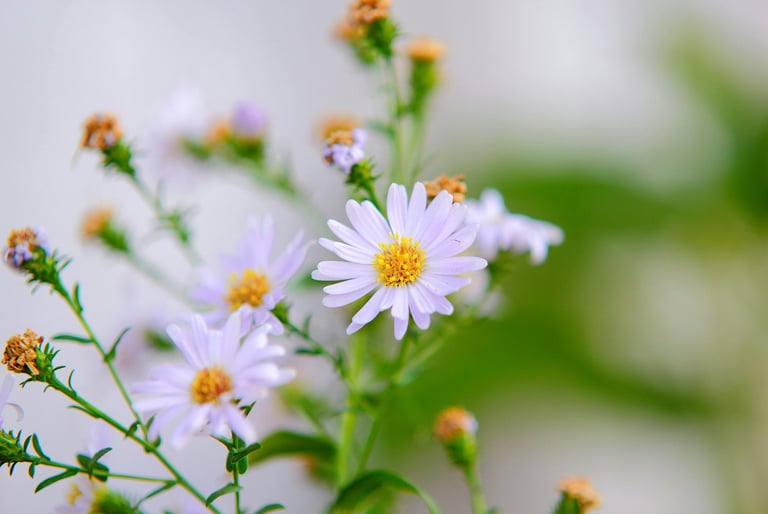

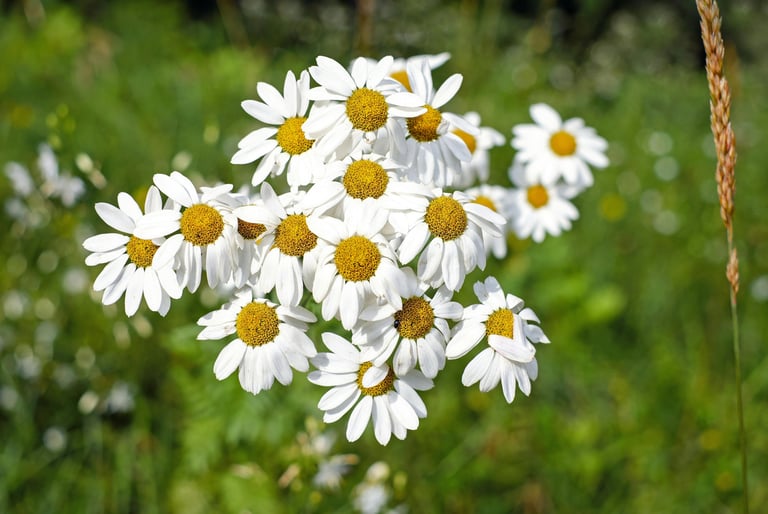

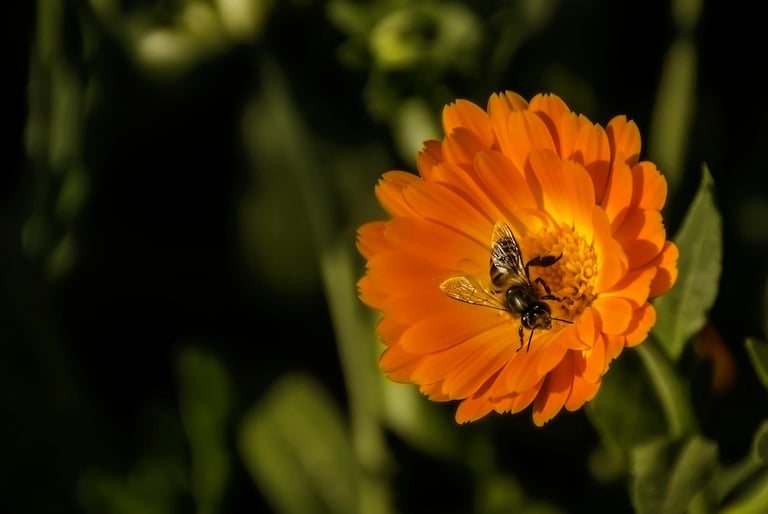

Calendula, commonly known as marigold, is more than a bright burst of color in the garden—it is a powerful symbol of healing, protection, and spiritual vitality. With its radiant, sun-like petals and long-standing use in herbal and ceremonial traditions, calendula has earned a place not only in flower beds but also in holistic practices and symbolic rituals. This vibrant flower represents inner warmth, renewal, and sacred light, making it a botanical emblem of both physical and emotional well-being.
Celebrated for its medicinal properties and spiritual significance, calendula offers more than beauty—it delivers a message of resilience, vitality, and transformation.
The Symbolism of Calendula Flowers
In the language of flowers, calendula holds rich and varied meanings:
Healing and Protection – Traditionally used in salves and teas to promote wellness and shield from harm
Joy and Vitality – Radiating warmth and energy, symbolizing the strength of the life force
Sacred Light – Reflecting spiritual brightness, inner guidance, and purification
Grief and Comfort – Used in remembrance rituals to honor the departed and bring peace
Calendula’s powerful symbolism makes it a meaningful presence in healing gardens, ceremonies of remembrance, and offerings of emotional support.
Mythology and Origins
Calendula’s use dates back to ancient Greek, Roman, and Ayurvedic traditions, where it was considered a sacred plant with regenerative powers. The name “calendula” comes from the Latin word calendae, meaning “little calendar” or “first day of the month,” referencing its tendency to bloom regularly throughout the seasons.
In many cultures, calendula was used to cleanse wounds, anoint sacred spaces, and mark religious festivals. Its association with the sun linked it to spiritual enlightenment, positive transformation, and the eternal cycle of life.
Emotional and Symbolic Use
Calendula is often chosen for moments that call for:
Comfort and encouragement during emotional healing
Protection and positive energy in the home or personal space
Celebration of life, vitality, and joy
Remembrance of loved ones in rituals or offerings
Its presence serves as a symbol of hope and wellness, whether offered as a gift, used in natural remedies, or planted in a sacred space.
A Flower That Radiates from the Inside Out
What sets calendula apart is its ability to combine strength with brightness. It not only survives harsh conditions but also brings color, comfort, and healing wherever it grows. As both a medicinal herb and a spiritual flower, calendula teaches that true healing begins from within—and often shines its way outward.
Whether used in traditional medicine, sacred rituals, or thoughtful gifts, calendula (marigold) offers a message of light, protection, and emotional renewal that endures across time and cultures.
The lotus is far more than a beautiful aquatic flower—it is a profound symbol of purity, spiritual awakening, and resilience. Rising gracefully from muddy waters, the lotus embodies the journey of growth through adversity, representing the triumph of light over darkness. Its delicate petals and serene presence have made it a sacred flower in many cultures, symbolizing enlightenment, rebirth, and divine beauty.
Known for its ability to bloom unstained despite murky surroundings, the lotus serves as a powerful metaphor for personal transformation and inner peace.
The Symbolism of the Lotus Flower
In the language of flowers and spiritual traditions, the lotus represents:
Purity and Enlightenment – Emerging clean and beautiful from muddy waters, symbolizing spiritual clarity
Rebirth and Renewal – Marking new beginnings and the cycle of life, death, and regeneration
Resilience and Strength – Thriving despite difficult conditions, embodying perseverance and hope
Divine Connection – Associated with gods and goddesses, reflecting sacredness and higher consciousness
These meanings make the lotus a central emblem in meditation, healing, and celebrations of spiritual growth.
Cultural and Historical Significance
Native to Asia, especially India and Egypt, the lotus has been revered in Hinduism, Buddhism, and Ancient Egyptian mythology for thousands of years. In Hinduism, it is closely linked to deities like Lakshmi and Brahma, symbolizing divine beauty and cosmic creation. Buddhism regards the lotus as a symbol of enlightenment and purity of the mind and soul, often depicted in art as the throne for Buddha.
In Ancient Egypt, the lotus symbolized the sun, creation, and resurrection, representing eternal life and spiritual awakening.
Emotional and Symbolic Use
The lotus flower is often used to express:
Hope and perseverance through life’s challenges
Spiritual growth and awakening
A fresh start or personal transformation
Purity of heart and mind
Its imagery encourages reflection on one’s own journey toward becoming a better, more enlightened self.
A Timeless Emblem of Spiritual Beauty
The lotus’s remarkable ability to bloom in muddy water reminds us that true beauty and strength come from overcoming hardship. Whether featured in gardens, art, or spiritual rituals, the lotus carries a message of growth, purity, and divine grace.
It invites us to embrace the process of transformation and to rise above difficulties with grace and dignity—making it a powerful symbol of hope, renewal, and spiritual clarity for all who seek deeper meaning in life.
Jasmine is more than just a fragrant flower—it is a timeless symbol of love, purity, and spiritual connection. With its delicate white blooms and captivating scent, jasmine has been cherished in cultures around the world for centuries. Whether used in tea, perfumes, or rituals, this enchanting flower carries layers of emotional and symbolic meaning tied to inner peace, sensuality, and divine grace.
Often blooming in the stillness of night, jasmine represents a beauty that awakens in quiet moments, offering calm, clarity, and emotional resonance.
The Symbolism of Jasmine Flowers
In the language of flowers, jasmine is known to convey:
Unconditional Love and Affection – Expressing deep emotional bonds and romantic devotion
Purity and Modesty – Honoring simplicity, innocence, and sincere intentions
Spiritual Awareness – Supporting meditation, prayer, and connection to higher consciousness
Elegance and Grace – Representing subtle strength, charm, and inner beauty
Because of these associations, jasmine is often included in wedding ceremonies, spiritual rituals, and gifts of heartfelt sentiment, making it one of the most cherished flowers for emotional expression.
Cultural and Historical Significance
Native to tropical and subtropical regions of Asia, jasmine has long been revered in Indian, Chinese, Middle Eastern, and Mediterranean traditions. In many cultures, it is considered a sacred flower—used to anoint deities, purify spaces, or celebrate love and union.
In India, jasmine garlands are offered in religious ceremonies and weddings as a symbol of divine blessings and auspicious beginnings. In the Middle East, the flower’s fragrance is a staple in traditional perfumes, reflecting beauty, sensuality, and refinement.
Emotional and Symbolic Use
Jasmine’s gentle yet potent presence makes it ideal for:
Calming anxious thoughts and promoting emotional peace
Celebrating romantic milestones or expressing devotion
Creating sacred spaces through scent and energy
Offering support during spiritual growth or healing
Its fragrance has long been associated with memory, intuition, and the emotional landscape, often used in aromatherapy to ease stress and evoke feelings of warmth and comfort.
A Fragrance That Touches the Soul
What sets jasmine apart is its ability to evoke emotion through scent alone. Blooming most fully after sunset, it teaches us that beauty and strength often emerge in stillness. Its presence in gardens, teas, essential oils, or handmade gifts reflects a longing for connection, serenity, and timeless love.
Whether used for reflection, romance, or rejuvenation, jasmine serves as a gentle guide toward emotional clarity, spiritual alignment, and heartfelt expression. It is a flower that whispers softly—but leaves a lasting impression on the soul.
Echinacea, commonly known as coneflower, is more than a striking wildflower—it is a symbol of healing, strength, and immune resilience. With its bold central cone and delicate, downward-facing petals, echinacea embodies the balance between endurance and vulnerability. Revered for centuries in both Native American medicine and modern herbal practices, this flower carries deep-rooted associations with wellness, protection, and inner power.
Echinacea thrives in open fields and harsh climates, making it a powerful botanical metaphor for overcoming adversity and cultivating natural strength.
The Symbolism of Echinacea Flowers
In the language of flowers and herbal traditions, echinacea is known for:
Health and Immunity – Celebrating the body’s ability to defend and heal itself
Resilience and Endurance – Symbolizing strength during times of stress, illness, or emotional challenge
Courage and Vital Energy – Representing stamina, boldness, and inner determination
Protection and Restoration – Offering physical and spiritual defense during vulnerable times
Because of its associations with healing and fortitude, echinacea is often used as a symbol of support, recovery, and personal empowerment.
Origins and Traditional Use
Echinacea is native to North America, where it was widely used by Indigenous tribes for its medicinal properties. The roots and flowers were traditionally applied to boost immunity, treat infections, and promote wound healing—a practice that continues in modern herbal remedies and supplements today.
Its botanical name derives from the Greek word echinos, meaning “hedgehog,” a reference to the spiny texture of its central cone. This feature reflects the flower’s symbolic toughness and natural armor against external threats.
Emotional and Symbolic Use
Beyond its health applications, echinacea carries emotional weight in symbolic contexts. It is often chosen to:
Encourage recovery after illness or emotional hardship
Represent personal strength and healing in gifts or rituals
Create grounding and protective energy in spaces of rest and renewal
Mark new beginnings that require inner stamina and clarity
Its vibrant bloom and rugged beauty serve as a visual reminder of the strength that comes from healing and persistence.
A Wildflower Rooted in Resilience
What makes echinacea truly special is its ability to stand tall through unpredictable seasons, thriving in dry soil, strong winds, and wild terrain. This gives the flower a symbolic identity tied to self-sufficiency, recovery, and natural fortitude.
Whether planted in a wellness garden, included in a bouquet of support, or used in herbal remedies, echinacea reminds us that healing is not just about rest—it’s about finding strength through every stage of the journey. With its distinctive appearance and powerful legacy, the coneflower is a lasting symbol of well-being, vitality, and courageous renewal.hat is simple, natural, and whole.
The Calendula
The Echinacea
